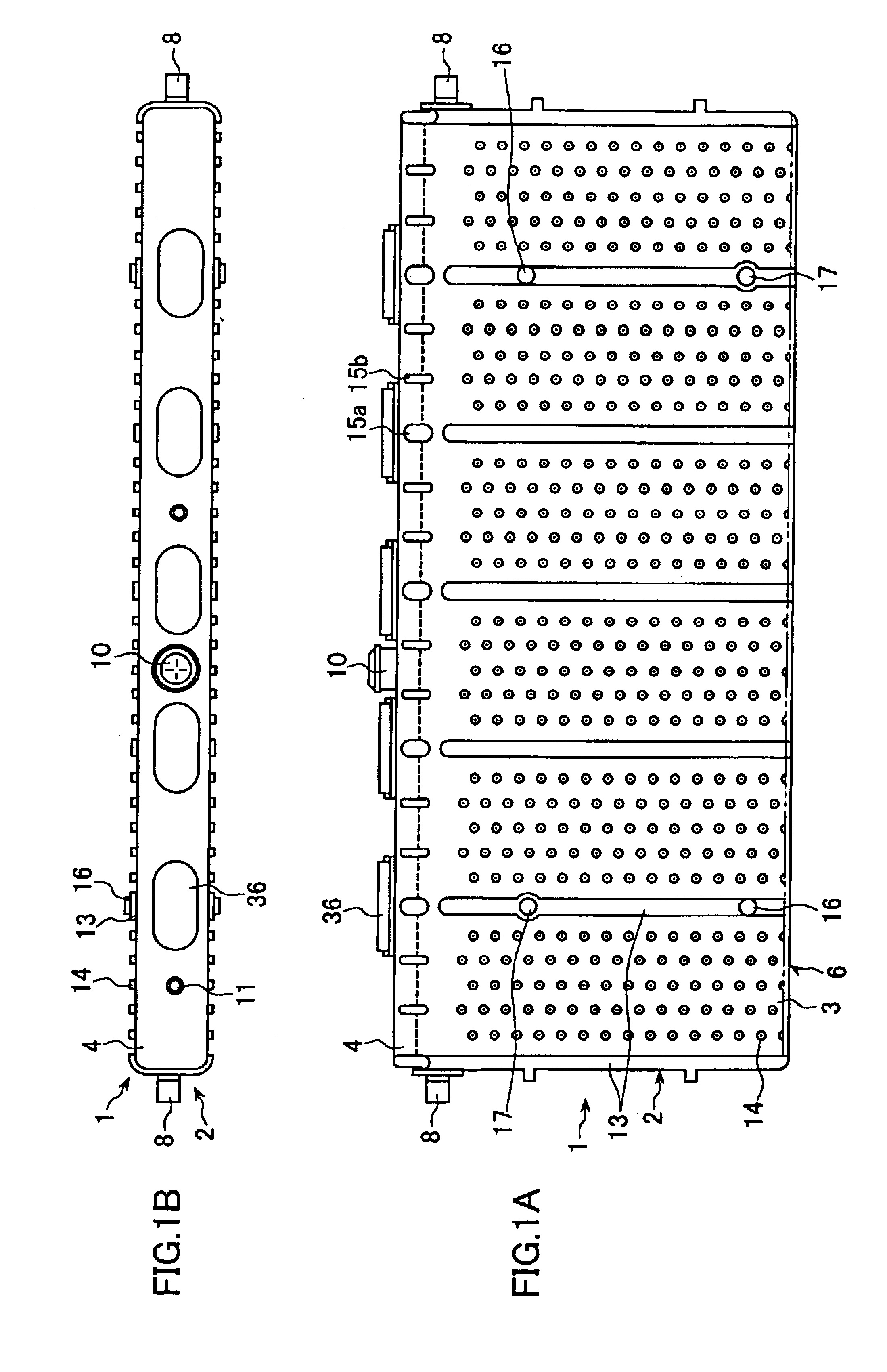Method for recycling battery pack
a battery pack and battery technology, applied in the direction of cell components, nickel accumulators, primary cell maintenance/service, etc., can solve the problems of increasing the internal resistance of the battery, the cost of replacing the battery pack with a new one is high, and the lifetime of the battery is limited by the lifetime of the battery, so as to achieve the effect of low cos
- Summary
- Abstract
- Description
- Claims
- Application Information
AI Technical Summary
Benefits of technology
Problems solved by technology
Method used
Image
Examples
Embodiment Construction
[0028]Hereinafter, a preferable embodiment of the present invention will be described with reference to the accompanying drawings.
[0029]First, a configuration of battery modules to be arranged in parallel and installed in a battery pack to which a recycling method according to one embodiment of the present invention is applied will be described with reference to FIGS. 1A, 1B, 2, 3, 4, 5, and 6.
[0030]A battery module 1 used in the present embodiment is a nickel-metal hydride secondary battery, which can be used suitably as a driving power source for PEVs and HEVs. As shown in FIGS. 1A, 1B, 2, and 3, the battery module 1 is made up of a plurality of (six in the drawings) rectangular cell cases 3, each having short side faces of small width, long side faces of large width, and an open top face. The cell cases 3 are connected with each other integrally sharing their short side faces, thereby forming an integral case 2, and the open top faces of the respective cell cases 3 are closed alt...
PUM
| Property | Measurement | Unit |
|---|---|---|
| weight | aaaaa | aaaaa |
| temperature | aaaaa | aaaaa |
| temperature | aaaaa | aaaaa |
Abstract
Description
Claims
Application Information
 Login to View More
Login to View More - R&D
- Intellectual Property
- Life Sciences
- Materials
- Tech Scout
- Unparalleled Data Quality
- Higher Quality Content
- 60% Fewer Hallucinations
Browse by: Latest US Patents, China's latest patents, Technical Efficacy Thesaurus, Application Domain, Technology Topic, Popular Technical Reports.
© 2025 PatSnap. All rights reserved.Legal|Privacy policy|Modern Slavery Act Transparency Statement|Sitemap|About US| Contact US: help@patsnap.com



